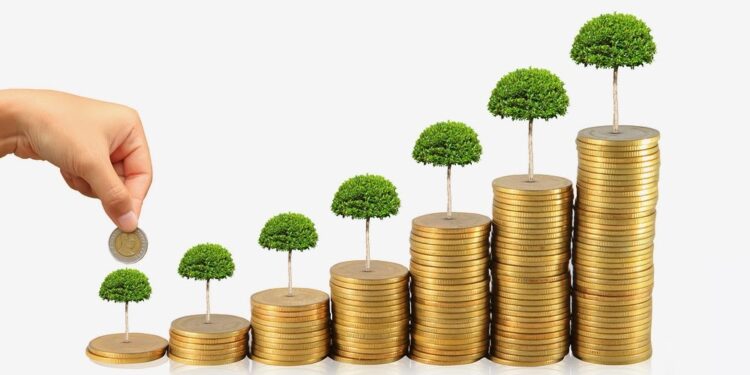The growth of the Kenyan economy has been steady over the recent past. This attributed to massive investments in infrastructure and creation of more jobs thus boosting the business climate of the country. The expansive fiscal policy of the East African community has enabled the country to bump money into infrastructural developments without pressurizing the domestic financial markets. This in return has helped keep the public debt at a threshold of 50%.
This despite the number of risks and threats that have been facing the country, for instance Alshbaab attacks that have affected the tourism sector, one of the key sectors of the country. Talking of the manufacturing sector, it has been stagnant in the recent years, woes attributed to minimal production and lack of competition in the sector. Regardless of the same the positive outranks the negative.
Sectors to invest in
Here some of the sectors you can invest in Kenya.
1. Agriculture
Agriculture is the key driver of the Kenya’s economy contributing about 25% directly to GDP, accounting for 18% of formal employment and more than 70% of informal employment and forming 65% of Kenya’s total exports. This sector provides the daily bread for majority of Kenyans and entails livestock farming, crop production, horticulture, fishery and forestry. Production of crops and horticulture contributes 76.5% of the total Agriculture GDP, with livestock farming, forestry and fishing contributing 4.9%, 0.7% and 0.5% respectively.
The opportunities up for grabs here range from floriculture and horticulture, value addition processing, development of multipurpose dams, large scale animal production for milk and meat, fisheries development and management, marketing infrastructure, development of abattoirs, establishment of disease free zones and Irrigated Agriculture Program for industrial crops. This sector is considered viable for investment because of; readily available well-established export market for agricultural products, affordable labour and land, and favourable government policies.
2. Manufacturing
Though agro-based it plays an important role in the growth of Kenya’s GDP. With the country shifting to export based manufacturing with an anticipation of increasing the regional share of products from 7% to 15%. The investment opportunities here include agro-processing, manufacture of fertilizer, iron and steel industries, motor vehicle assembly, manufacture of spare parts, machine tools and machinery, assembly of automotive components and electronics, manufacture of garments and manufacture of plastics, paper, pharmaceuticals, chemicals, metal and engineering products for both domestic and export markets.
This sector is largely boosted by high demand for locally manufactured goods, easy access to the regional market and global market for its manufactured goods owing to its membership in East African Community (EAC), Common Market for East and Southern Africa (COMESA) and African Growth Opportunity Act (AGOA). In addition to that Kenya is promoting development of Industrial Parks, Special Economic Zones (SEZs), Industrial Clusters, development of niche products, promotion of small and medium scale manufacturing firms, commercialization of research and development results.
3. Tourism
This sector is the third largest GDP contributor after agriculture and manufacturing. And it’s a leading foreign exchange earner to the country. It presents opportunities like; hospitality and tourist attractions such as wildlife, national parks, game reserves, forests, savannah grasslands, geographical landscapes, hot springs, good climate, salt and fresh water lakes, mountains, coastal beaches, world heritage sites, rich cultural history, botany and zoology, coral reefs, caves and river deltas, among others. Growth of this sector has been greatly boosted by conducive and enabling environment, good government policies and support, liberalization, political stability, yielding tourism promotion and readily available market.
4. Energy
Energy is identified as one of the three pillars of Vision 2030. As a result, the government is focused in the need for additional generation of energy, going as far as introducing Feed-In Tariff (FIT) policy to attract private investments. The main sources for energy in the country include wood fuel, petroleum and electricity accounting for 69%, 22%, and 9% of the total energy use respectively. 67.5% of the electricity is generated from renewable energy i.e Hydro, Geothermal and Fossil fuels at 47.8%, 12.4% and 32.5% respectively.
Kenya is on route to become Africa’s biggest producer of geothermal energy and set to achieve production of 5,000 megawatts (MWs) of power by 2030, over 70% of this from renewable sources. Kenya also intends to start building its first nuclear plant as from 2022 for a five-year period at a cost of about Ksh 500 billion with a capacity of 1,000 MWs. With plans to build four such plants afterwards with a total output of 4,000 MWs, pushing the total cost to Ksh 2 trillion.
With 80% of the country’s population without access to electricity some of the opportunities in the sector include generation of energy using renewable sources, development of diesel plants and hydropower, construction of pipeline and storage facilities for petroleum products, drilling and steam field development of wells for geothermal, and with the discovery of oil in Turkana country, investors can also enter the sector to explore petroleum deposits in other potential regions of the country.
5. Infrastructure
The government is currently undertaking massive infrastructural developments throughout the country. Some of the undergoing high projects include building of a standard gauge line to replace the current Kenya-Uganda railway, development of a new corridor from Lamu to South Sudan and Ethiopia (LAPSET), redevelopment of the Northern Corridor, development of a commuter railways system around Nairobi and construction of a new terminal at Jomo Kenyatta International Airport.
The opportunities in this sector include; road construction and rehabilitation, rehabilitation of airports, construction of power generation plants, construction of the proposed multi-billion shilling Konza ICT Park and construction of resort cities in Isiolo, Lamu, Diani, Kilifi and Lokichoggio towns.
6. Information and Communication Technology
With the size of the local market estimated to be at Ksh 50 billion, Kenya is a hub of technological innovation, for instance the very well-known MPesa Software. The sector enjoys a stable pro-investment government, business friendly regulatory reforms, a pool of highly educative, innovative talent and culture, regional strategic location and Kenya is a host to regional offices for the world’s biggest technology companies including Google, Microsoft, IBM, Oracle, Cisco and SAP.
7. Real Estate and Construction
This is one of the most lucrative and vibrant sectors of the economy. With the current housing deficit standing at about 300,000 units nationwide, constant increase in population and ever growing demand for affordable housing, the sector offers opportunities such as construction of commercial and industrial buildings, residential, agency, consultancy, manufacture and supply of construction materials. In helping to advance this sector, Kenya boosts quality engineering, readily available building and architectural design services and good infrastructural network.
8. Environment and Natural Resources
Kenya is endowed with an environment that comes with many investment openings. These include; mining of minerals, climate change programmes (prediction and adaptation), solid waste management, catchment protection, Eco-Tourism facilities in forest reserves, carbon offset schemes and control of invasive weeds.
9. Banking and Finance
This sector has continued to grow and expand rapidly due to increased lending and significant financial innovation. Some of the areas to invest here include; Banking (Kenya has more than 40 banks), Insurance (Kenya is under-insured with penetration level of about 1% of GDP), Capital markets, Pension Schemes, Building Societies, Microfinance Institutions (MFIs), Kenya Post Office Savings Bank (KPOSB), Savings and Credit Cooperative Societies (SACCOs), Development Finance Institutions (DFIs) and informal financial services such as Rotating Savings and Credit Associations (ROSCAs).
Why invest in Kenya
Kenya fosters an attractive investment environment in terms of low cost, infrastructure, strategic location, market access and cheap skilled workforce. This is solely because Kenya has competitive opportunities and favourable regulation ready to be exploited by investors. They include but not limited to the following:
- Kenya economy is East and Central Africa’s largest and most advanced economy contributing to more than 40% to the region’s GDP. The rebase of the country’s economy back in 2014 made it the sixth largest economy in Africa and third in the Sub-Sahara region. It’s one of the most diversified and advanced economies in Africa supported with strong growth prospects.
- Kenya enjoys a low risk investment environment, boosting as the strongest in the East and Central African region with advanced markets and multinational companies setting up their regional and continental headquarters in the country.
- The cost of doing business in Kenya has been lowered to favourable levels compared to other countries in the region. Regulatory reforms have also been introduced intended to reduce the time taken to register a business and reduce the number of licensing requirements.
- Kenya is in the process of achieving a production of 5,000 MWs of power by 2030, 70% of that from renewable sources, making the country Africa’s biggest producer of geothermal energy. The country also plans to tap into nuclear energy with the construction of the first nuclear plant projected to start as from 2022. This will increase the availability of energy while at the same time reducing its cost.
- Kenya is strategically located in the region acting as a gateway to East and Central Africa, making the country ideal for strategic partnerships designed to uplift regional and global market share.
- The physical infrastructure of Kenya is relatively well developed making the country a transport hub for East and Central Africa. The infrastructure of the country is under major transformation that will make the country more accessible; Standard Gauge Railway, Lamu Port Southern Sudan – Ethiopia Transport (LAPSSET) Corridor and expansion of the Jomo Kenyatta International Airport. Kenya also boosts the eight-lane controlled-access 50km Nairobi-Thika superhighway that was completed in 2012.
- Kenya enjoys preferential access to world markets under a number of special access and duty reduction programmes. Kenya being a signatory to many trade agreements and tax treaties enables the country to reap heavily from smooth, free and predictable trade flows. For instance Kenya is a member of World Trade Organization (WTO), East African Community (EAC), Common Market of Eastern and Southern Africa (COMESA), Africa Growth and Opportunity Act (AGOA) and ACP-EU Trade Agreement (the Cotonou Agreement).
- A wide range of Kenya’s manufactured products are entitled to preferential duty treatment in the United States of America, Japan, Canada, New Zealand, Australia, Switzerland, Norway, Sweden, Finland, Austria, and other European countries under the Generalized System of Preferences (GSP).
- Kenya has liberalized its economy by removing obstacles that hinder free flow of trade and private investment. For instance it has removed import and export licensing, exchange controls and restrictions on remittances of profits and dividends.
- Kenya boosts a large number of skilled, educated, sophisticated and cheap readily available workforce whose services are sought out in the region, continent and worldwide. With 55% of Kenya’s population composed of the labour active age of between 15 and 64.
- Despite waves and changes in the political atmosphere Kenya has enjoyed unrivaled stability, both political and economic-wise.
- Kenya has a vibrant, vocal and resilient private sector that advocates for their concerns ensuring a leveled ground for business between the public and private sector, fair treatment and advocating for conducive business legislations. These include: Kenya Private Sector Alliance (KEPSA), Federation of Kenya Employers (FKE) and the Kenya Association of Manufacturers (KAM).





































































































































































































Great piece, captivating… Thumbs up